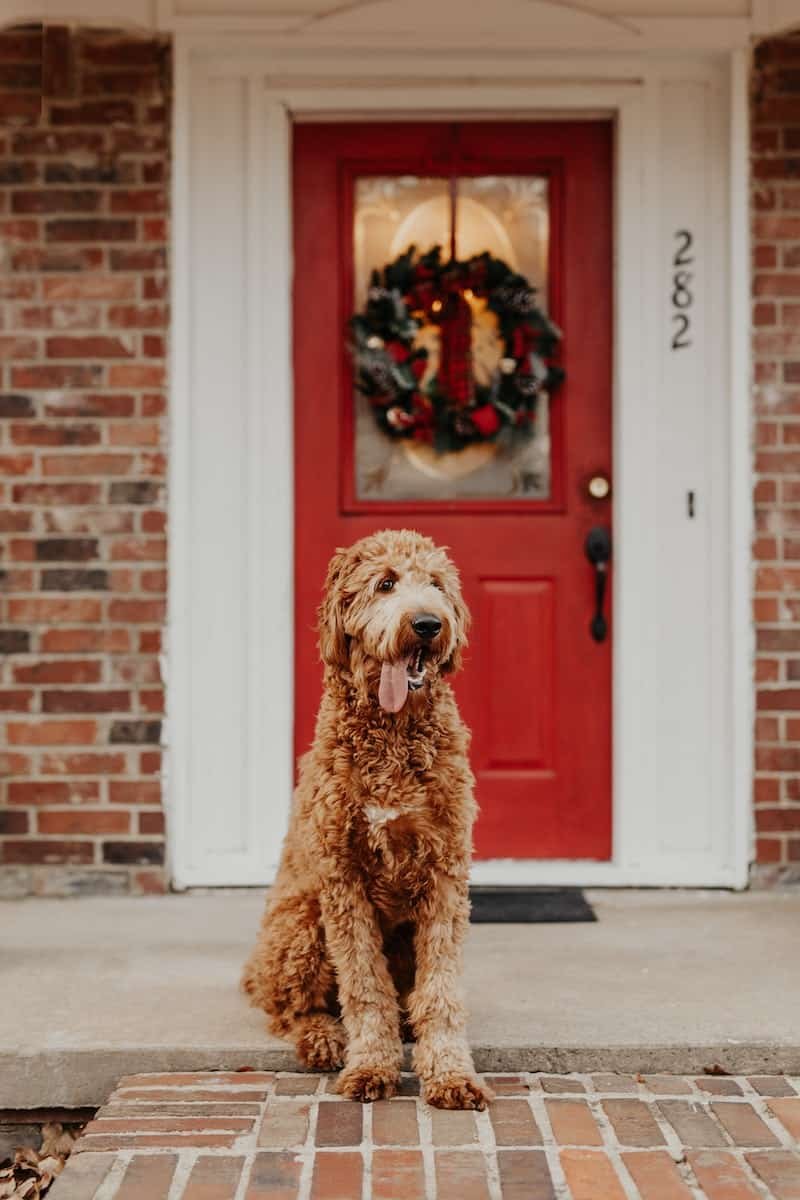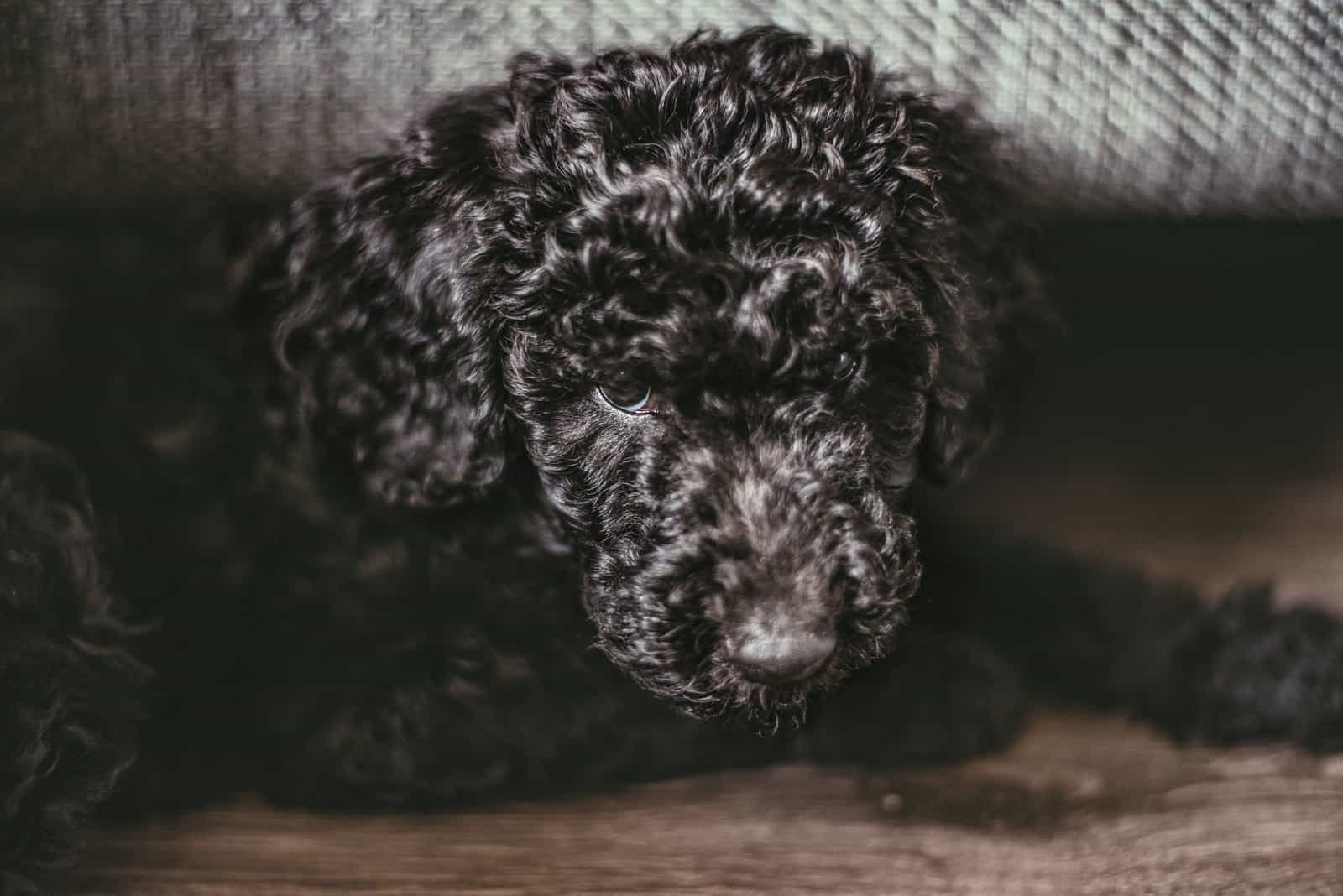You’ve heard of the main three varieties the American Kennel Club recognizes, which are the Standard Poodles, Miniature Poodles, and Toy Poodles. You probably also heard of the Teacup Poodle, and possibly the micro poodle, e.g. the smallest among the bunch.
But how about Giant Poodles? These poodles, as their name suggests, are a larger version of the Standard breed. They can weigh anywhere from 50 to 100 pounds or more! And they’re not just for show dogs anymore. Some people have them as pets, while others keep them as guard animals.
History of Giant Poodles
There are no exact origins of the Giant Poodle. However, we know more about the Standard Poodle, which is the variety Giant Poodles officially belong to and the most popular one. The Standard Poodle was developed in Germany during the 19th century by crossing German Shepherd Dogs with English Bulldogs. It’s believed that this cross-breeding happened because the Germans were looking for a dog that could be used for both hunting and guarding purposes.
Poodles originated in Germany back in the 16th century, where people called them pudel or pudelin. Those two terms translated to “to splash in the water.” They worked for hunters as a water retriever, then after its entrance in France, these dogs quickly grew in popularity, becoming France’s national dog! They used Standard Poodles for duck hunting in France, while Miniature Poodles worked as truffle hunters.
Now, you don’t find many Poodles catching waterfowl for hunters in cold water. This breed is now the epitome of luxury and leisure. However, you can still find small and large Poodles working as circus performers, emotional support animals, and the like, thanks to their intelligence, sensitivity, and eagerness to please.
Over time, people bred Standard Poodles to accommodate different sizes. There is the Miniature Poodles and Toy Poodle, which are the smaller versions of Standard Poodles. You can even find the Teacup Poodle, standing less than 9 inches tall. Toy Poodles did not work as hunters like their larger counterparts. Instead, this small dog served as an animal companion for the Parisian bourgeoisie.
Giant Poodles probably came to be in the 20th century, as people were experimenting with different Poodle varieties and mixed breeds to accommodate everyone’s preferences.
Early 20th Century Giant
The first Giant Poodles came into existence around the same time, but it wasn’t until the early 20th century that these dogs started gaining popularity. In fact, many people believe that the Giant Poodle was created specifically for the purpose of being a guard dog. This is because the Giant Poodle has a very strong jaw and powerful neck muscles.
The Giant Poodle was bred to be even bigger than its predecessor, the Standard Poodle. As such, it became known as the “Giant” Poodle. Today, there are two types of Giant Poodles: the American Giant Poodle and the British Giant Poodle.
American Giant Poodles
The American Giant Poodle is the largest of all the Giant Poodles. Its size ranges between 60 and 80 pounds. Like other Giant Poodles, it has a long body, large head, and short legs. But unlike the standard Poodle, the Giant Poodle has an extremely muscular build.
This type of Giant Poodle is usually found in the United States. There are several reasons why this particular Giant Poodle variant is so popular. For starters, it’s easy to train, making it ideal for service work. Also, it’s relatively inexpensive compared to other breeds.
British Giant Poodles
The British Giant Poodle is slightly smaller than the American Giant Poodle. It weighs between 40 and 55 pounds. Unlike the American Giant Poodle, the British Giant Poodle doesn’t have any muscle mass on its back. Instead, it has a sleek, smooth coat.
Like the American Giant Poodle variant, the British Giant Poodles are good at training. They’re also easy to handle, making them great family pets.
Appearance
Giant Poodles (also known as Royal Poodle), is like your typical Standard Poodle. The only difference is its size. As the name suggests, Royal Poodles are the largest among the other versions of Poodles!
That said, Royal Poodles are merely Standard Poodles, just bigger than average. The Standard Poodle stands at 15-21 inches tall on average, weighing 45 – 70 pounds. Compare that with the Royal Poodle, which measures a whopping 20-28 inches tall, weighing 80-90 pounds. That’s similar to the Bernese Mountain Dog!
Note that the American Kennel Club does not recognize Royal or Giant Poodles, commonly referred to as standard. But they aren’t exactly Standard Poodles either because of the larger dimensions!
Also, these Poodles have a luxurious curly coat many people adore, mainly because it’s considered hypoallergenic. That means this dog doesn’t shed as much, making it suitable for allergic people.
Let’s now take a look at the Giant Poodle colors! As with many breeds, Giant Poodles come in various poodle colors, depending on their genetics.
Solid Color
Most Poodles are born in solid colors, and black is the most common. Giant Poodle Colors can come in apricot, white, blue, brown cafe au lait, cream, silver, silver beige, gray, and red.
Temperament
Like the other Poodle varieties, Giant Poodles are more intelligent and trainable breeds worldwide. Regarding their temperament, since it’s a personal trait, it can differ between dogs, but these dogs are sharp. They can learn commands and tricks reasonably quickly, thanks to their humble origins as working dogs with a people-pleasing nature. Besides that, these Poodles have an adorable personality and high affection levels, perfect for active owners and all kinds of families.
Because of their heritage, Poodles are incredibly energetic, especially Giant Poodles! Poodles have a ton of energy for regular exercise, training, and playtime, yet they are elegant and obedient. Expect Giant Poodles to be excellent watchdogs, as they are protective but not an aggressive breed! Poodles won’t show any hostile attitude towards people, and as long as they are with their beloved family, Poodles won’t complain!
While Poodles have a diva-like dog reputation, they are an active, fun-loving, and popular breed with an affectionate nature. Poodle enthusiasts will appreciate this giant pet Poodle because it acts like a child who loves to play and cuddle afterward, even with its enormous size. This dog will also love his affectionate family and other dogs and loved ones, as long as you properly socialize and train your dog.
Given the Giant Poodle’s activity level and size, you can even enroll it in agility classes to join agility competitions! It’s an excellent way for these family dogs to expend their energy levels.
These Poodles aren’t only a great companion at home, but they are also suitable to work as an assistant or therapy dog. Standard Poodles would have difficulty working as a therapy dog for the disabled, as it may require heavier work, but the giant Royal Poodle can learn from training and handle more physical tasks.
For active hunters, you can raise your Poodle to hunt alongside you, fetching your small game or waterfowl.
Health Problems
Unfortunately, Royal Poodles are at risk of health issues similar to the Standard Poodle, such as:
Gastric Dilation Volvulus, or Bloat: It’s common in larger dogs when the stomach fills with fluid or gas and then twists. If left untreated, it can reduce blood flow and cause issues around the stomach lining, potentially fatal.
Hip dysplasia and elbow dysplasia occur when their sockets aren’t aligned, grinding against one another. It can cause mobility issues.
Addison’s disease occurs when the Poodle’s cortex damages, so there’s less cortisol released.
Progressive Renal Atrophy: The photoreceptor cells cause the eyes to degenerate, causing vision problems, often resulting in blindness.
Besides that, the Royal Poodle can also get sick from:
Ear infections
Cataracts
Because of the potential health conditions and genetic diseases a Royal Poodle can get, it’s crucial to prevent or treat them early through regular vet checkups and vaccinations. We also suggest getting health clearances of your dog to prepare for what can happen. And of course, it’s vital to give your Poodle the proper care needed, from the food it eats to exercise and grooming requirements.
Given the larger size, a Royal Poodle can live for up to 10-12 years on average. You can even find these Poodles living up to 15 years with regular veterinary care, proper nutrition, and regular exercise.
Care Requirements
While Giant Poodles would require more food, water, and exercise, this dog will have similar care requirements as the other Poodle varieties.
Giant Poodles still require daily brushing, frequent baths, and trims, as well as lots of daily exercise and obedience training. The only difference is that you’re handling a much bigger dog, so take account of the time and space you have for a Giant Poodle before owning one!
Also, don’t forget to provide your Poodle with a lot of mental stimulation and attention, as these giant dogs are prone to separation anxiety and boredom when left alone. After waiting for hours, you wouldn’t want to come home to your furniture destroyed or a howling dog.
To prevent your Giant Poodle from going rampant around the house, you must train this intelligent breed adequately. You can bring your Poodle to training classes or refer to training videos to do so yourself. Either way, we highly recommend using a positive approach training method, which Poodles thrive from in the long run. That way, it shows that you’re an assertive owner, lessening any chance of negative traits or stubbornness from intensifying.
It would be best to groom your dog regularly, which can be more expensive because of its large size. If you bathe and trim the dog yourself, it will take a lot of commitment, patience, and time!
How Much are Giant Poodles?
The prices of Giant Poodles will significantly vary, depending on the reputable breeder and your location. There’s no set price for these Poodles, but we can compare them to other Poodle varieties.
You can expect Standard Poodles to cost anywhere between $600 to $1,500. A Miniature Poodle costs between $1,000 to $2,000. Given the size and exclusivity of the Royal Poodle, the price can go higher.
Make sure you search for reputable breeders specializing in these dogs, as Royal Poodles aren’t easy to come by.
It’s possible to adopt for a lower price in local animal shelters, but this Poodle variety might also challenge to find. That said, it’s worth contacting your animal shelter rescue group if they do have Royal Poodles up for adoption. That way, you don’t spend as much on a breeder, and you also get to rescue dogs for them to lead normal lives.





